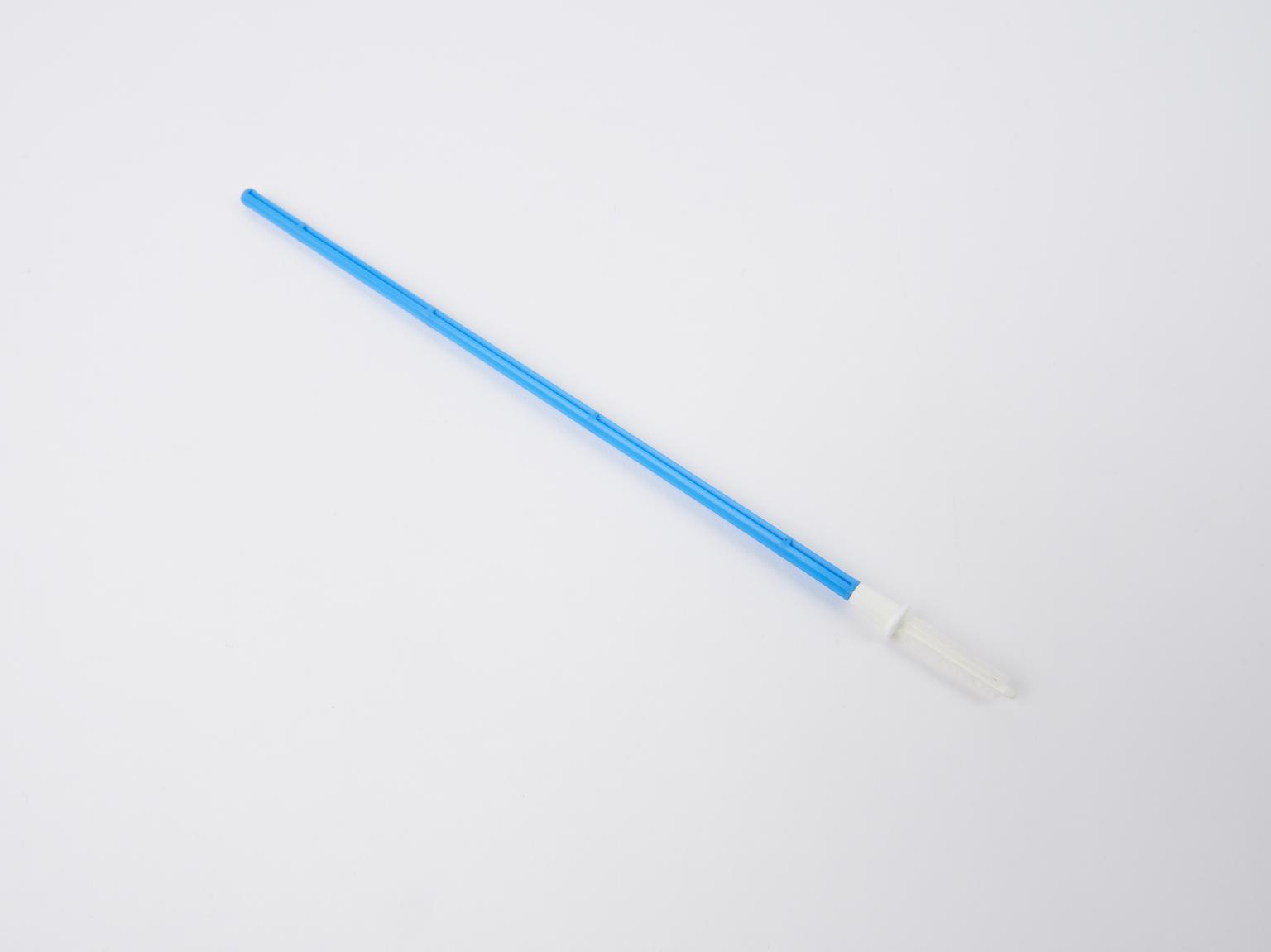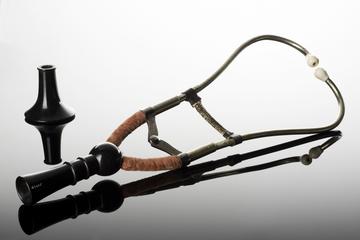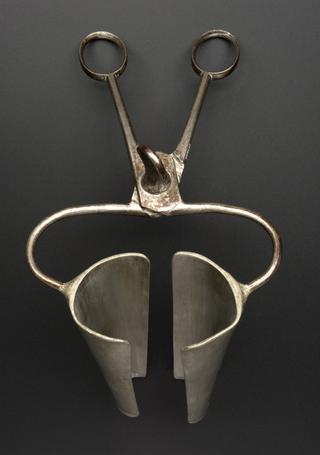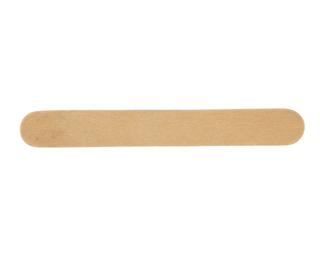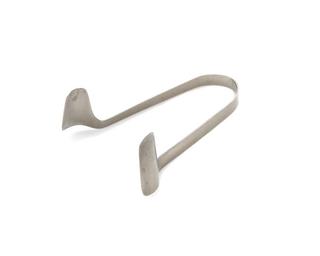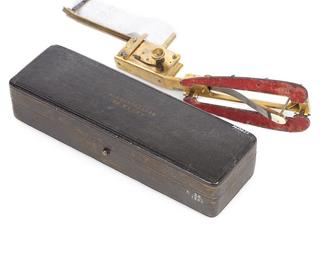
brush used during liquid-based cytology screening
One blue brush with wide, pointed brush tip used during liquid-based cytology screening to take cervical a sample, BD Sure Path, 1990-2017
More
Since 2008, liquid based cytology tests have been used in the United Kingdom to carry out a cervical screening test. Cells are removed from a person’s cervix using a special brush which is then rinsed into a small container of liquid and sent off with the brush head to a laboratory. Here the sample is added to a glass slide and examined.
Originally, samples were taken with a wood spatula and the sample smeared onto a glass slide which was then sent to the lab for examination. This was sometimes known as a Pap smear, after its developer by Dr Georges Papanicolaou (1833-1962). Although cervical screening has been available in England since the 1960s, only in 1988 was a centralised screening programme developed.
Since 2016, cervical screening in England is also used to detect HPV (human papillomavirus). Almost all cases of cervical cancer are caused by high-risk HPV. For a small number of people, their immune system will not be able to get rid of high-risk HPV. If left unmonitored or untreated the virus may cause cervical cancer.
- Measurements:
-
overall: 200 mm x 50 mm,
- Materials:
- plastic (unidentified)
- Object Number:
- 2019-42/1
- type:
- brushes
- Image ©
- The Board of Trustees of the Science Museum
